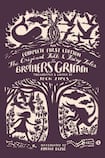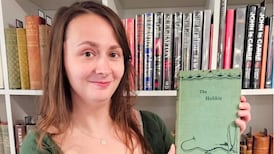
In 1812 Jacob and Wilhelm Grimm, bright young brothers aged 27 and 26, published a collection of folktales for which they had no great expectations. Kinder- und Hausmärchen (Children's and Household Tales), printed in 900 copies by Reimer of Berlin, has never gone out of print. It has had an enormous influence on the development of folktale collection and studies in Europe, and played a significant role in the evolution of children's literature.
The 1812 edition consisted of 86 stories, followed in 1815 by a companion volume of an additional 70. Among the tales are The Frog King, Rapunzel, Hansel and Gretel, Cinderella. Little Red Riding Hood, Snow White and The Robber Bridegroom, to name the very best known. Some of these, such as Cinderella and The Frog King, are fairytales, but religious stories, animal tales and many legends also found a place in the collection.
Almost all the stories, collected in Germany, are international, and were known in oral tradition in many other countries, Ireland included, as was soon observed once the book “went viral”. Indeed, the Grimm brothers carried on a lively correspondence with the Cork collector Thomas Crofton Croker, and were so interested in the Irish connection that they translated one of Crofton Croker’s Munster collections to German.
Kinder- und Hausmärchen was first translated to English in 1823, in a volume called German Popular Stories. The tales were refined and prettified extensively but still managed to exert quite an influence, and many subsequent English editions are derived from it. (A Dublin imprint appeared in 1825, published by Jones Robins.)
Astonishingly, given the enormous importance of the Grimms’ book, no reliable English translation of that first 1812 edition has existed in its entirety until now.Few are better placed to undertake this task than Jack Zipes.
Contemporary language
A professor of German language and literature, Zipes is one of the world’s experts on the Grimms, and on fairytales in general. Here, he has translated the stories to what he calls “contemporary American English”. This declaration might set alarm bells ringing – we know the Disney-ish for Grimm already – but his English is plain, unobtrusive, and lovely, mirroring perfectly the unpretentious German of the first edition.
Zipes’s introduction is brilliant and, as an overview of the work of the gifted brothers (they were learned scholars of truly heroic stature) it can hardly be surpassed. This section in itself is a model of what good writing should be. Like authentic folktales themselves, it is luminous and clear as glass. If only all writing could be like this!
Zipes unfolds the fascinating background to and publishing history of the Tales, itself as entertaining as any story. The Grimms assembled the stories from a variety of sources. Some they collected themselves directly from storytellers; others they received in letters from helpful friends, mostly young women.
Not equipped with sound recording equipment, and relying sometimes on skeletal texts, the Grimms could not be utterly faithful to the words of the teller, as later folklorists, such as those working for the Irish Folklore Commission, would insist on being. But they did their best, and they rewrote the tales in a good approximation of the straightforward style in which they were told.
In later years Wilhelm Grimm more or less took over the management of the fairytales because Jacob was busy with other great works, such as the massive German Dictionary. In subsequent editions, Wilhelm made the language more arty, in the faux-elegant style of the day, and did not shirk from bowdlerising the content of earthier stories.
Zipes provides vivid illustrations of the process of refinement. The most striking example is in the taming of Rapunzel. In the 1812 edition, Rapunzel's nurse discovers that her charge is carrying on with a young prince when the girl complains that her clothes are beginning to feel tight. "Oh you godless child!" the fairy exclaims. "What's this I hear?"
Rapunzel is swiftly banished to a dark forest where, all alone, she gives birth to twins. She does eventually find the lost prince, of course – all fairytales end with a wedding, even if the children are born before the happy conclusion occurs. In the 1857 edition, Wilhelm deleted all references to Rapunzel’s pregnancy.
Contemporary concerns
Other tales were scoured to suit readers who liked fancy writing but were offended by references to human sexuality – and it was generally assumed that all children fell into this category. In fact, the concerns of the bourgeois parents of 1812 were not unlike present-day worries about children and the internet.
As Jacob Grimm pointed out, children would have been insulated from stories with adult content only if they didn’t live in the same house as adults. Then as now, alas, the generations tend to live at close quarters, especially if they are poor.
Still, Wilhelm did his best to protect the innocent children of the bourgeoisie, the main readership for the book, from too much reality, and obediently edited to suit the market.
In this new translation, however, we receive the stories as they appeared in the earliest, most authentic edition. As well as all of the famous and eternally enthralling stories, the Grimms’ illuminating prefaces, notes and commentaries are included.
This is an outstanding book. Like the first Kinder- und Hausmärchen, it surprises and delights, entertains and edifies. Zipes, not for the first time, has succeeded in producing a work which is both scholarly and popular. Every child and household deserves to have a copy of this collection on the shelf of their most precious volumes.
Éilís Ní Dhuibhne is a writer and folklorist. Her latest work is in the collaborative novel Sister Caravaggio (Liberties Press) and an essay on folktales in Folklore and Modern Irish Writing (Irish Academic Press)










